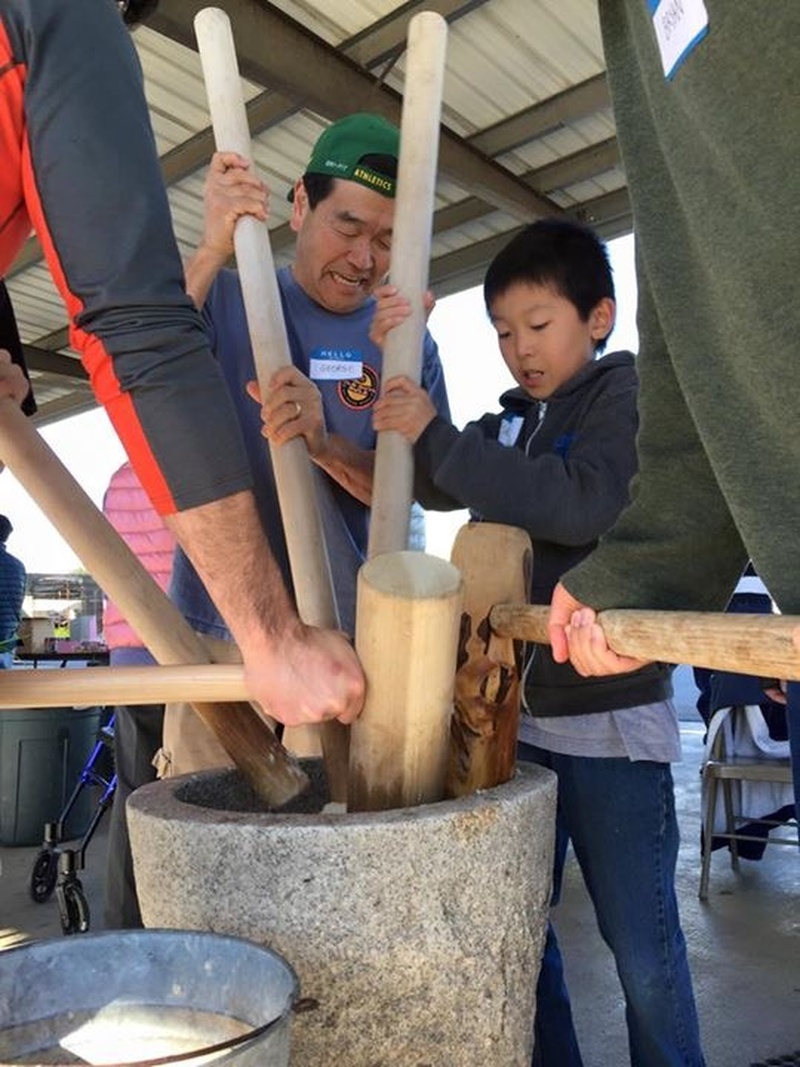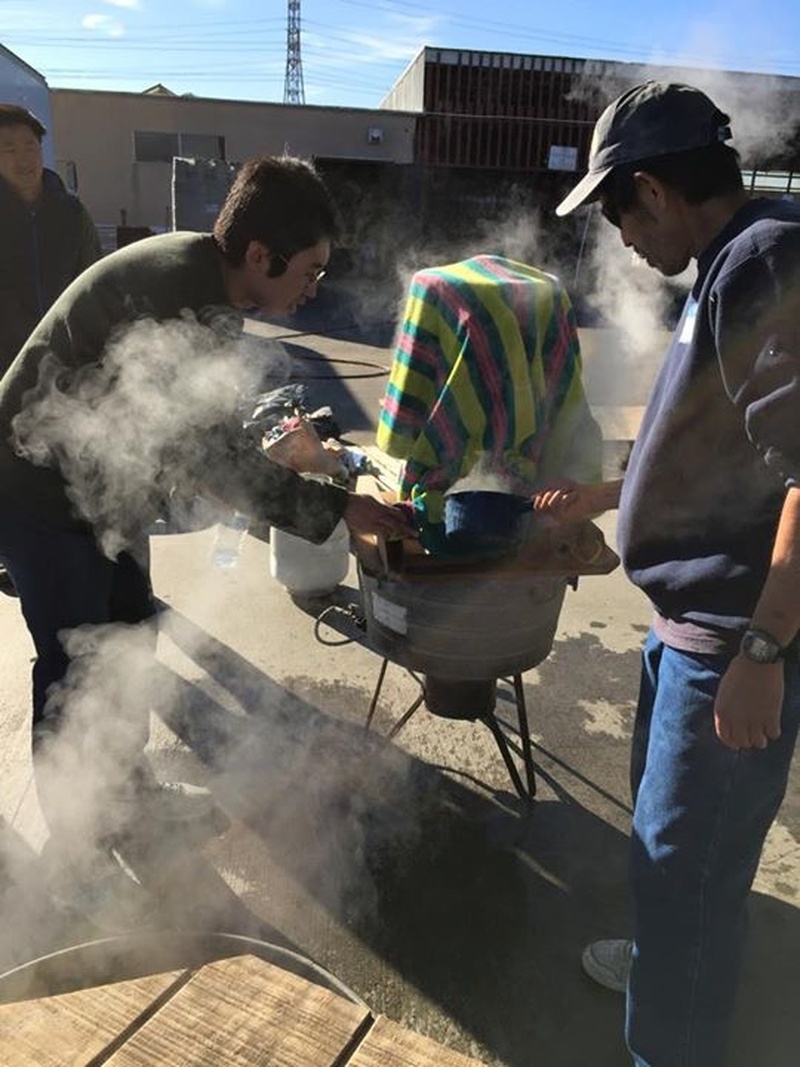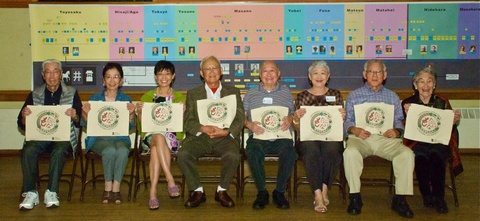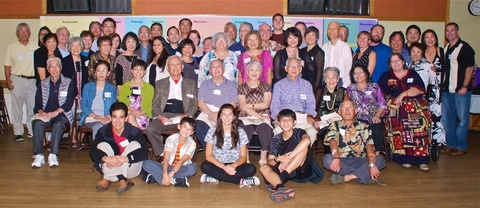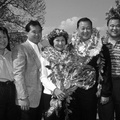How well do you know your own family? Specifically, your extended family: uncles, aunts, cousins, second cousins, great aunts, etc. Maybe it is because I am older now, but it seems my relationship with my father’s family has only grown stronger. Even my relationship to my wife’s family has developed, although after over 20 years of marriage, I would hope so. But, the strengthening of relations with your extended family is certainly not inevitable, even as we age, and I find it interesting how things have worked out for the better.
For me growing up, there were my father’s relatives who we saw regularly, if not frequently, and there were those we almost never saw. The ones I knew best lived in Southern California like we did, so I grew up playing with two of my second cousins because they lived in the same city. I only remember one set of relatives visiting from Japan and I am not sure how we are related to them.
As a Japanese American, the notion of family has always been important. But as I became more aware, I noticed that the American ideal family model a la classic television shows such as Ozzie and Harriet and Leave to Beaver did not necessarily apply to me. For one thing, all of my biological grandparents died before I was born. I now realize how lucky I was that my mother’s uncle and aunt adopted her and eventually became our surrogate grandparents. It did make our family tree complicated, since even I knew when I was small that you only get two sets of grandparents and I somehow had three. I remember trying to reconcile my mother’s maiden name (Moritani) with the fact my grandparents were named Nagata. But, on my father’s side, there was just a void. There were no grandparents, no great uncles and aunts, and, in a way, no direct connection to Japan.
In contrast, my wife, Qris Yamashita, has a robust family with active relations with several Japanese relatives here and in Japan. I remember meeting her Issei grandmother, Yamashita baa-chan, when she turned 101. Her father Sam was one of seven children, including five boys. When Qris’ grandmother passed away, the funeral was overflowing with Yamashita uncles, aunts, and cousins who I could not sort out at the time because of the sheer volume. My wife’s familiarity with her army of cousins amazed me, but I later concluded that her grandmother’s long life made that possible. Qris’ father and uncles all took turns taking care of their mother, which provided a familial hub that my father’s family lacked. While most of the brothers and the older sister took their turns, there was also a younger sister that I never met. She would have an interesting role in family relations this last Christmas.
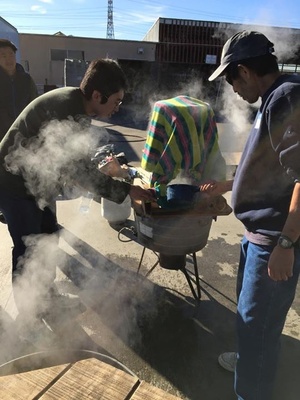
(Photo by Richard Yamashita)
But the Yamashita clan has another mechanism that keeps members of the extended family in touch with each other: mochitsuki. For those who don’t know, mochitsuki is the manual process of making mochi or sweet rice cakes, a tradition for the Japanese New Year. The Yamashita’s were a farming family who began making their own mochi between Christmas and New Year’s over a century ago. After a break due to the war, they started it up again in 1947. They haven’t wavered from the basic method: boiling water in a metal tub outdoors to steam the sweet rice, then pounding it in a bowl with wooden hammers into a smooth consistency, and finally cutting it into cakes or patties.
My wife loves mochi and loves her family mochitsuki, but I used to hate it. I disliked the unfairness of the way it was organized. Basically, there was too much rice and not enough people to do the pounding. I don’t even like mochi, but I felt an obligation to help the core group of people who ensured all the rice got cooked and pounded, some years, after it got dark. I almost quit going, because I didn’t think things would change. After all, the Japanese invented machines to make their mochi decades ago, but the Yamashita family insisted on the same laborious process and I didn’t expect them to adjust.
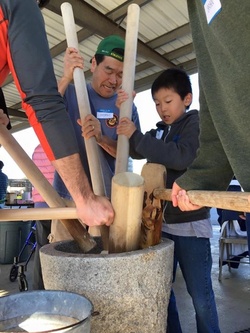
But I was wrong. Qris’ cousins decided to set up some basic rules, including limits on how much rice each family could bring while encouraging more active participation by all. Also, after being stuck in a generational sandwich, where the Nisei uncles were getting too old to help and the Yonsei children were too young, leaving only the out-of-shape Sansei to pound until we could no longer make a fist, more of the grandchildren came of age to increase the work pool.
Still, the Yamashita mochitsuki appeared to reach the end of the road in 2013. Uncle Tak, the eldest son and well into his 90s, sold his house in Oxnard where the gathering had been held for years and moved to Arizona to be close to one of his five daughters. I thought that was that and, once again, I was wrong. Instead, one of the in-laws, Harry, whose previous responsibility at mochitsuki was to distribute sake (“one for you, one for me”), unexpectedly announced last summer that his family’s wholesale nursery in Gardena would be the new site in 2014.
The surprising revival of mochitsuki seemed to set off another set of Yamashita family happenings. Qris’ sister-in-law Joyce came across the name of the youngest aunt, Sumiko, during an Internet search. Auntie Sue had become estranged from the rest of the family before I met Qris, and Joyce discovered that she had passed away three years ago and was in the process of being interred by Los Angeles County with other unclaimed individuals in a mass grave at Evergreen Cemetery in Boyle Heights. After consulting with Uncle Tak (the oldest living relative) and his family, Qris spoke to Fukui Mortuary, who made the arrangements to recover her aunt’s remains. Uncle Tak wanted his sister to be laid to rest next to his parents, who were, ironically, already at Evergreen. The decision was to have a service on the Sunday after mochitsuki.
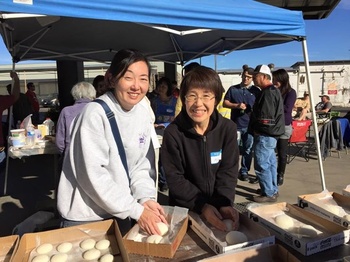
The other interesting family element came from Japan. A Yamashita relative, Kazutoshi, who had attended college in Southern California and lived with the family in the post-war era, heard about Auntie Sue’s service and decided to visit with his daughter Mika. Kazutoshi, now 83, knew that Uncle Tak and Auntie Molly, Uncle Tom, and Qris’ mother Etsuko were among the few left from the Nisei generation. Mochitsuki and the service were the appropriate occasions for him to pay his respects. Coming in on Christmas Day, Kazutoshi and Mika demonstrated that amazing Japanese quality of dutifully, but pleasantly, discharging their family responsibilities, no matter how exhausting it might be. They spent time with Qris’ mother on Christmas, visited three cemeteries, including the service at Evergreen, ate several meals with different groups of relatives, mingled with the extended family at mochitsuki, and steadily unloaded their suitcase filled with omiyage (gifts) throughout their visit.
The service for Auntie Sue at Evergreen encapsulated much of the significance of the week. Though not as well attended as mochitsuki, the service, conducted by Rev. Furumoto of Senshin Buddhist Temple, brought together a wide range of family for an aunt who most had not seen in over 25 years. Furumoto sensei provided the historic context by describing some basic characteristics of people from Kagoshima-ken, where the family originated. He also noted that Jodo Shinshu Buddhism was banned in this prefecture, but adherents resolutely maintained their faith by secreting statues of the Buddha in walls and bowing discretely. Stubbornness does seem like a Yamashita trait. More importantly, with the service for the lost aunt, the family was able to come together to discharge a basic responsibility, just like their Japanese relatives. I had a revelation that these moments are when a family really becomes a family.
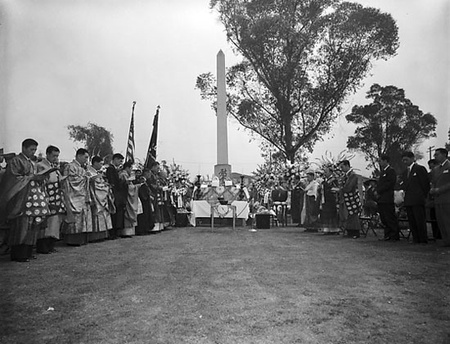
The events concerning my father’s family are less involved, but illuminating. As with the Yamashita family, the Komai’s lost more of its Nisei generation in 2013 and 2014, including my mother and my aunt. As mentioned above, I was mostly unfamiliar with my extended family when, in 1998, my father’s cousins decided to organize a Komai reunion in Las Vegas. The Komai family story in the United States is pretty basic, yet has a few unusual twists. My grandfather Toyosaku, the oldest son, arrived on May 28, 1900. He got involved with a number of businesses, including an employment agency and a newspaper called the Rafu Shimpo. While the majority of oldest sons stayed in Japan, Toyosaku came looking for opportunities because, as far as we can surmise, his father had diminished the family fortune. He then sent for a brother and two sisters. After the war, another brother (there were nine children in all) came to America. The descendants of the five siblings make up the Komai Family Reunion.
The first reunion did not come off without a hitch. One of the organizers, Elsie and her husband Harry, were in a car accident the day before the reunion was to start and both eventually died. The other organizers were at a loss on how to proceed, while my siblings and first cousins were in the dark at what had happened. This was before most of us had cell phones, so communication was not immediate. But, it was decided that going forward was the right move and the reunion took place. The Nisei clearly enjoyed getting together, and the rest of us began the slow steady process of becoming acquainted with our extended family.
It was decided to hold a reunion every two years and that the responsibility would be alternated between the Southern California and Northern California relatives. The next three reunions went off as planned, but there was a gap in 2006 as we began to lose Nisei and only a few people seemed willing to take on the obligation to organize an event. My second cousin Phillip and I arranged another reunion in Las Vegas in 2008 when it occurred to me that this new tradition could not survive unless we could convince some of the Northern California relatives to share the responsibility again. So, Phillip, Qris, and I made a trip up to San Jose and met with some of our relatives and laid out how it would be great to have a reunion in Japantown there. They agreed and we had a wonderful get-together in 2010.
But, in 2012, we set a reunion in Little Tokyo and it had the lowest turnout. Some of it was simple conflict of schedules and some of it was probably getting started too late. But, I began to wonder, as the Nisei passed, if the Komai reunions could continue without them. Many participants were there to help a father or mother. One of my cousins was charged with bringing his mother, but when she passed, he stopped coming. Fortunately, when the subject came up about the 2014 reunion at the farewell breakfast, there was a desire expressed by some Northern California relatives that we should complete the California J-Town trifecta and have the next event in Nihonmachi in San Francisco.
So this next one, in my mind, would be the litmus test to see if this family function could continue. Fortunately, my second cousin Jil, stepped up big time. She and her family with help from the other relatives set up the 2014 reunion that included a Giants-Dodgers game (a horrible affair which the Giants won, 9-0), a dinner at the Japanese Cultural and Community Center of Northern California with bento brought in, and then a farewell breakfast at the base hotel near the airport. Despite the baseball debacle and the unrelenting harassment from the Northern California relatives (who are now insufferable because the Giants won the World Series) and me falling down on the sidewalk and cutting my lip because I am old and uncoordinated, it was an enjoyable and well-attended event. Jil’s nephew Jon, who is working on his master’s degree at USC in music composition, organized his friends to play some of his jazz songs for the family. Dale, another second cousin, showed parts of an oral history he had recorded featuring my mother at the 2008 reunion. We took a photo of our Nisei generation and then a group picture. After 16 years, I think I can identify everyone.
The point, it seems to me, is that family relations persist, given half a chance. The Yamashita mochitsuki lives. The Komai Family Reunion continues. I’d liked to believe that there is something our Issei and Nisei relatives taught us about family and obligation that connects us as Japanese Americans to each other and to Japan. What I found illuminating was hearing from both the Yamashita and Komai Japanese relatives that extended family get-togethers are unusual in Japan. Just like the Japanese don’t pound mochi as a family activity, they don’t organize family reunions with first cousins once removed and second cousins. As with the development of U.S. ensemble taiko groups and the American tradition of Buddhists holding services on Sunday, extended family reunions are a creation of Japanese Americans. It is something in which we Nikkei should take pride. We have our own traditions, family traditions, that even our Japanese relatives admire.
© 2015 Chris Komai



